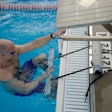
At the 2025 Health and Fitness Association conference Thursday, industry veteran Rick Caro, founder of Management Vision, moderated the show’s 28th annual Financial Panel, which featured a group of financial experts with deep knowledge of the fitness industry. The panel included Amna Malik, executive director at Morgan Stanley; Zach England, managing director at Harris Williams; Robbie Shapiro, managing director at York Capital Management; and Marty Newburger, partner at KSL Capital Partners. The panelists offered valuable insights into the coming challenges and opportunities for the fitness industry in the year ahead.
Post-COVID recovery and growth trajectory
The panel highlighted the fitness industry's remarkable resilience post-pandemic, with membership growth reaching unprecedented levels. While membership numbers trend positively, several financial metrics, such as non-dues revenue and earnings before interest, taxes, deductions and amortization (EBITDA), still trail pre-COVID benchmarks in many cases. The panelists expressed optimism for 2025, predicting continued growth, particularly in segments catering to higher-income consumers and in the high-value, low-price (HVLP) category.
Economic factors and government policies
The panel addressed concerns about how the current administration's policies might affect the industry. The panel offered a consensus that the fitness market is remarkably recession-resilient, noting that consumers typically prioritize their fitness memberships even when cutting other discretionary spending. They indicated that economic uncertainty often drives people to their fitness facilities as a stress outlet and wellness necessity, which will be particularly important should the domestic and geopolitical landscape continue on its course of volatility.
Cost challenges and operational headwinds
Labor costs remain a primary concern for operators, with immigration policy changes potentially causing further wage inflation pressures. Construction and equipment costs face uncertainty due to potential tariff impacts, which could affect new facility development timelines and budgets. Despite these challenges, the panelists noted that the worst of the pandemic-era labor inflation appears to be subsiding.
Investment and M&A activity
While 2024 didn't deliver the anticipated volume of merger and acquisition activity, the panel remained cautiously optimistic about 2025 transactions. The industry continues to attract significant private equity interest due to its recession-resilient qualities and subscription-based revenue models.
Several factors were highlighted as favorable for M&A activity:
- Abundant "dry powder" from private equity firms needing deployment
- Fitness companies increasingly viewed as safe investments during economic uncertainty
- Favorable debt market conditions with multiple lenders interested in the fitness space
The panel noted that timing would be crucial for successful transactions, with companies showing strong financial fundamentals, clear growth paths, and minimal earnings adjustments likely to command premium valuations.
Emerging industry trends
The financial experts identified several key growth drivers and evolving market dynamics:
- Demographic shifts: The 18-24 age group represents the fastest-growing membership segment, with Gen Z and Gen Alpha showing unprecedented interest in fitness.
- Industry segmentation: A trend toward categorizing the market by consumer lifestyle rather than traditional facility types, with some operators beginning to integrate fitness with other wellness and leisure offerings.
- Pricing power: Post-COVID, many clubs successfully implemented price increases with minimal pushback, though future increases might require more transparency and demonstrated value enhancement.
- Cross-industry integration: The potential for increased collaboration between fitness operators and adjacent sectors like hospitality, sports and retail, with Nike's interest in fitness studios cited as an early example.
The financial panel concluded that despite macroeconomic uncertainties, the fitness industry's fundamental growth trajectory remains strong, supported by changing consumer preferences, demographic trends and increasing health consciousness across generations. The sector's demonstrated resilience positions it favorably for continued investment even amid broader economic challenges.





































